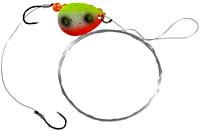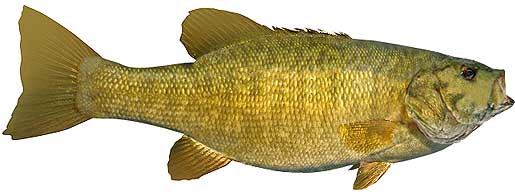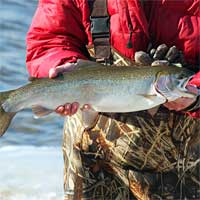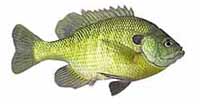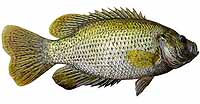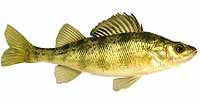Fishing Report For Deep Creek Lake, MD
By Rick Seaman
Last updated on .
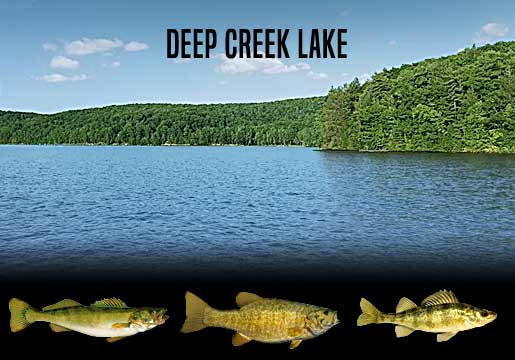
Fishing Reports
Popular Fish Species Deep Creek Lake, MD
Walleye
Current Report: Fair
FALL. Fall brought cooler temperatures to shallow water, drawing walleye and baitfish shallower. Walleye continue to be a major draw for anglers. Locals report catching nice walleye on long points, flats along the river and creek channels, and structure off shore. Jigs, swimbaits, spoons, crankbaits, jerkbaits, and spinnerbaits are all historically good for catching walleye this time of year. Early Fall finds them in 8 to 22 feet of water. Later in Fall, they move out slightly deeper. Dragging jigs, bottom bouncers, or worm harnesses with nightcrawlers or leeches, around ledge drop-offs is catching walleye fairly consistently. Watch for the bigger walleye to be slightly deeper than the majority of the school.
WINTER. This Winter fishing for walleye has been pretty good through the ice, for the last few years. Before, during and after the ice, anglers report catching them in the main basin area, in 18 to 40 feet of water, along deep creek channel edges, rocky humps and ledges. Steep drops in the area toward the dam are also producing during these cold months. They primarily feed on small fish, staying close to the bottom. After ice-out blade baits, jigs, swimbaits, spoons, deep-diving crankbaits, and worm harness spinners, all work while deep trolling or drifting.
SPRING. Early Spring brings warming water in the shallows, and draws walleye here to feed, especially rocky areas and inlet channels. In Spring work points, drop offs, submerged structure, rock ledges, flats and flats adjacent to deeper water. Windy points and flats, in and around Green Glade, Poland Run Cove and North Glade, are popular areas. Here, in 3 to 14 feet deep, they will spawn once the water warms to the mid to high 40's. When they move shallow, bright colored jigs, tipped with minnows or nightcrawlers typically catch them. Spinnerbaits, jerkbaits and crankbaits are also working when walleye are up shallow. Afterwards, they move to 10 to 20 feet deep around points, flats, shoals and ledges, nearby shore, often staying in close proximity to their spawning locations.
SUMMER. Water temperatures rise in Summer, and walleye fishing is good if you can get your bait deep enough. Early in Summer, walleye tend to concentrate in 8 to 20 feet of water. Poland Run and Meadow Mountain Run shelves and flats with weed edges that transition to deeper water, are popular spots. Throughout Summer, early in the morning, and from dusk to long after dark are good times to catch walleye. At those times they move slightly shallower to feed in low-light conditions. Night fishing is often good in Summer, as well. The rest of the time they are cruising flats and creek channel edges, 15 to 30 feet deep , preferring the cooler temperatures. When the bite is slow, grubs and nightcrawlers, fished just off the bottom typically catch walleye.
Smallmouth Bass
Current Report: Fair To Good
The relatively clear water here suits smallmouth bass quite well. These smallies love to indulge in crawdads, so mimic them with your lures. Due to the clear water, light line tends to get more bites.
FALL. Fall is in full swing and smallmouth have followed schools of baitfish into coves and bays 6 to 18 feet deep. They thrive in the cold, clean water, which is an ideal environment for them. Locals report that tube jigs are a great choice when the bass are around 15 feet deep. Drop shot rigs with small worms or shad shaped plastics are also popular in 10' water or deeper. Jerkbaits, deep-diving crankbaits, and slow-rolled spinnerbaits, are also successful, when bass are shallow to mid depth. Later in Fall, smallies move to slightly deeper water, around 10 to 25 feet deep. Fishing shallow for smallmouth is often good on cold, windy, cloudy and rainy days.
WINTER. Winter will isolate them around deeper structure, points, flats and creek channels, often suspending in open water above these features. They can generally be found from 12 to 20 feet deep. The deeper ledges around Poland Run and Deep Creek Lake State Park are good choices. Jigging spoons, tube baits, drop-shot worms, jigs and Ned rigs tend to temp smallmouth in deep water. I like to work these deeper haunts very slowly, as the bass are somewhat sluggish. Here they hold, feeding less frequently, awaiting warmer water to return in Spring.
SPRING. After ice out, when water temperatures rise into the 50's, smallmouth move from deep wintering spots to shallower water, just outside spawning areas. They feed heavily in 3 to 12 feet of water at this time, and are typically caught on jerkbaits, crankbaits, tube baits, Ned rigs, and crayfish imitating plastics. Once water warms into the high 50's, they move into shallower water, and create nests in gravel or sand areas, then lay their eggs. Females then move to deeper water and males remain to guard the eggs, and then the fry. After a couple weeks, the males also move into 15 to 18 feet deep, and feed aggressively. Long-time locals report using small, crankbaits, jigs and tube worms, in crawfish colors, and having good success.
SUMMER. Smallmouth bass are currently feeding shallow early and late in the day in 6 to 12 feet of water. They are being caught on topwater, crankbaits, swimbaits, Ned rigs and tube baits. Smallmouth bass here feed on crawfish, gizzard shad, and small sunfish. They prefer rocky or gravel bottom areas, as this is where crayfish live. During the hotter parts of the day, they are being caught on points, humps, and ledges around 22 feet deep. Often these deeper fish tend to school, so finding them can deliver some fast action. Anglers fishing around the section of the lake nearby Poland Run Cove, the US-219 bridge area, Deep Creek Narrows, Turkey Neck and Meadow Mountain Run are areas reported to be popular walleye territory.
Yellow Perch
Current Report: Good
FALL. As Fall is working its way toward Winter, anglers are finding yellow perch feeding aggressively in 8 to 20 feet of water, especially around weed lines and drop offs, Later in the Fall, they begin migrating toward Winter holding areas, often in the deeper sections around the deeper edges of weedbeds, drop offs along flats, channel edges, and humps. Minnows, spinners, spoons and crankbaits are ideal this time of year.
WINTER. Because of their abundance all around the lake, perch are fun to catch in winter ice fishing. The cold of winter drives perch deeper again in search of food and stable water conditions. Mid-depth flats are ideal Winter holding spots. Early in Winter, perch are caught when they are feeding in weedy areas, in 8 to 20 of water. Later in Winter, as the lake freezes over they descend into 15 to 30 feet of water. Fishing for perch through the ice was good again this year, using minnows, mealworms, maggots, and nightcrawlers.
SPRING. Perch spawn in Spring when the water temperature warms to the mid 50's and mid 60's. Anglers are beginning to catch them in 4 to 14 feet of water using minnows, mealworms, maggots, and nightcrawlers. Docks, weed lines, drop offs all attract yellow perch searching for a meal. Later in Spring, they drop into 10 to 14 feet of water. Coves in the North Glade and Green Glade areas have historically delivered great stringers of perch.
SUMMER. Fat yellow perch here feed primarily on small fish and invertebrates. Spinners, underspins, small crankbaits, mealworms, nightcrawlers and maggots are catching perch in 6 to 25 feet of water. In early Summer, plus the first and last hours of the day ,seek them out in feeding zones, 3 to 8 feet deep. Drop-offs and in areas with submerged vegetation are key feeding spots..
Fishing Video
Fish species to fish for...
Guide to fishing for largemouth bass, smallmouth bass, white crappie, walleye, rainbow trout, brown trout, bluegill, pumpkinseed sunfish, rock bass, yellow perch, chain pickerel and northern pike at Deep Creek Lake in Maryland.
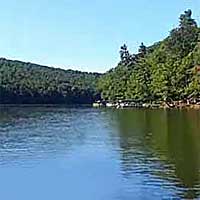 Deep Creek Lake in Maryland is a 3,800-acre lake with over 65 miles of shoreline, and is reported to be one of the top fishing lakes in the state. Bass, crappie, walleye, trout, sunfish, perch and pike all share this water. It is also considered the top lake in the state for ice fishing.
Deep Creek Lake in Maryland is a 3,800-acre lake with over 65 miles of shoreline, and is reported to be one of the top fishing lakes in the state. Bass, crappie, walleye, trout, sunfish, perch and pike all share this water. It is also considered the top lake in the state for ice fishing.
Primary fish species to catch
Click images for fishing tips and details about each species.
Today's Weather & Forecast
Fishing Boat Rentals
Click here for fishing boat rentals.
Public Boat Launch Ramps & Landings
Click here for boat ramps.
Marinas
Click here for marinas.
Fishing License
Click here for a Maryland Fishing License.
Map - Fishing & Access
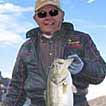 Rick Seaman is a fishing enthusiast with over five decades of fishing experience, a retired tournament fisherman, author of numerous published articles on fishing, and co-author of the book "Bass Fishing - It's not WHAT you throw, It's WHERE you throw it".
Rick Seaman is a fishing enthusiast with over five decades of fishing experience, a retired tournament fisherman, author of numerous published articles on fishing, and co-author of the book "Bass Fishing - It's not WHAT you throw, It's WHERE you throw it".
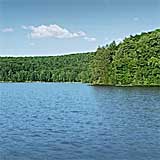 Contact Information
Contact Information
Deep Creek Lake State Park
898 State Park Rd
Swanton, MD 21561
301 387-5563
Fishing lakes in each state
110425
Deep Creek Lake, Maryland Report
MARYLAND


Information about fishing lakes in Maryland
Deep Creek Lake offers bass, crappie, walleye, trout, sunfish, perch and pike fishing in northwest MD.





